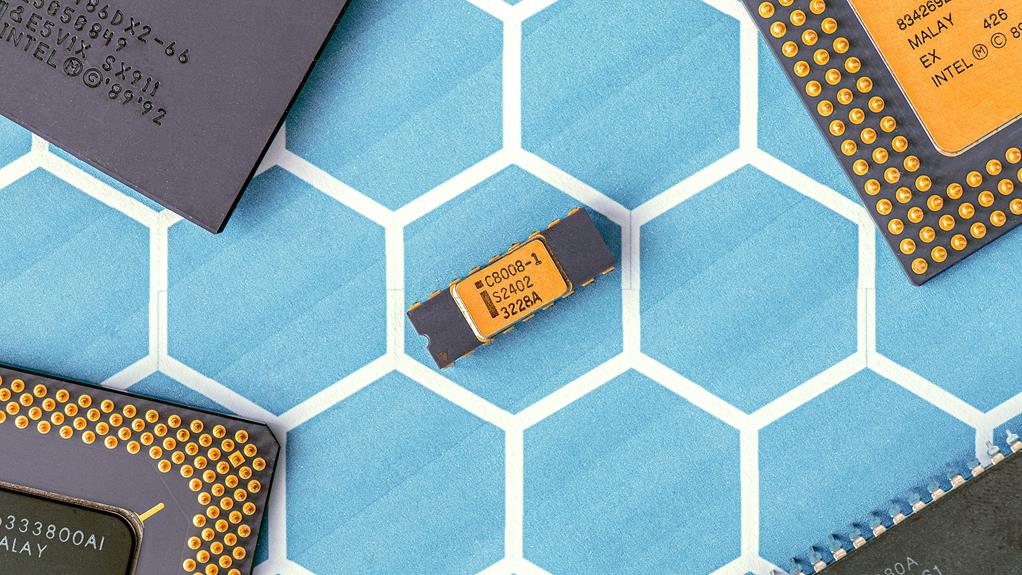Are you curious about the hidden treasures lurking in your old electronics?
Gold recovery from electronics is like finding a diamond in the rough. With a little know-how and the right tools, you can extract gold from devices like laptops, phones, and cameras.
But beware, this isn't a get-rich-quick scheme. It's more of a scientific adventure. Safety is key, as the process involves hazardous chemicals, so make sure you have proper safety gear and work in a well-ventilated area.
And remember, once you've successfully recovered the gold, it's crucial to dispose of the chemicals responsibly by contacting a hazardous waste processing facility.
So, grab your goggles and gloves, it's time to embark on this golden journey.
Our Highlighted Points
- Electronics such as laptops, phones, and memory chips contain gold that can be extracted.
- Older electronics tend to have higher amounts of gold.
- Essential equipment and materials for gold recovery include circuit boards, hydrochloric acid, glass beakers, and safety gear.
- Proper disposal of hazardous waste from the extraction process is important and should be done through certified facilities.
Potential Gold Sources in Electronics
To identify potential gold sources in electronics, you'll need to assess the various components and peripherals for their gold content. Electronics such as laptops, phones, SIM cards, main boards, graphics cards, and memory chips are known to contain gold.
Industrial video equipment can also yield a significant amount of gold, up to a couple of ounces per machine. Older electronics tend to have more gold, making them a potentially lucrative source for gold extraction.
Additionally, peripherals like graphics boards, internal modems, and ethernet port boards have significant amounts of gold in pins and surface layers.
The 2020 Tokyo Olympics even used gold, silver, and bronze collected from e-waste and smartphones, highlighting the potential value of gold recovery from electronic devices. The decision to collect precious metals from discarded electronics also served as a reminder of the environmental impact of e-waste and the importance of recycling. In addition to promoting sustainable practices, the use of reclaimed gold, silver, and bronze in the Olympic medals offered a unique opportunity to showcase the benefits of responsible electronic waste management. The lucky pocket piece test results further reinforced the viability of recovering precious metals from old devices, proving that valuable resources can be salvaged from what is often considered as waste.
With careful assessment, these various components and peripherals can serve as excellent sources for gold extraction.
Essential Equipment and Materials for Gold Recovery
To begin gold recovery from electronics, you'll need a specific set of essential equipment and materials.
First, you'll require circuit boards from electronic devices. These boards contain the gold that you want to extract.
Next, you'll need acid, specifically one part hydrochloric acid, which can be found in toilet bowl cleaner. This acid is crucial for dissolving the unwanted metals and leaving behind the gold.
Lastly, you'll need a glass beaker, coffee filter, scissors, plastic cups, and a large soda bottle for the extraction process.
It's important to have these materials ready before you start the gold recovery process to ensure a smooth and efficient extraction.
Preparing Electronics for Gold Extraction
To prepare your electronics for gold extraction, you'll need to carefully remove the PCBs and identify the gold-colored areas on them. Once the PCBs are removed, follow these steps to ensure a successful gold recovery from electronics:
- Strip off all components from the PCBs: Remove any resistors, capacitors, or other components attached to the board. This will expose the gold-colored areas for extraction.
- Break the PCBs if necessary: If the PCBs are too large to fit into a beaker for gold extraction, you can break them into smaller pieces. Ensure safety precautions are taken, such as wearing protective goggles and gloves.
- Properly handle and dispose of electronic waste: Electronic waste contains harmful substances, so it's important to handle it properly. Dispose of any non-recoverable parts in accordance with local regulations to minimize environmental impact.
- Store the extracted gold: After the gold extraction process, store the recovered gold in a safe and secure place until further processing or sale.
The Gold Extraction Process
Continuing the process of gold recovery from electronics, you'll now learn about the gold extraction process.
Once the gold-colored areas on PCBs have been identified and removed, the next step is to extract the gold. This involves the use of dangerous chemicals such as hydrochloric acid, so it's crucial to exercise caution and use proper safety equipment.
The first step in the extraction process is to create an etching solution that will dissolve the nickel under the gold.
Once the gold foils are extracted, they need to be filtered and cleaned. To further purify the gold, it's then melted in a clay bowl with borax. After cooling, the gold can be extracted from the re-solidified borax.
Alternatively, a new, nontoxic method using acetic acid and an oxidant has been discovered, which dissolves gold in just 10 seconds, leaving other metals intact and reducing costs significantly.
Proper Disposal of Hazardous Waste
After extracting gold from electronics, it's essential for you to properly dispose of the hazardous waste using a proper waste processing facility.
Here are some steps to guide you in the proper disposal of hazardous waste from gold recovery:
- Contact a certified hazardous waste processing facility: Make sure to reach out to a facility that specializes in handling and disposing of hazardous waste. They've the necessary equipment and expertise to handle the chemicals safely.
- Follow the facility's guidelines: Each facility may have specific guidelines for the disposal process. It's important to adhere to these guidelines to ensure the safe and proper disposal of the hazardous waste.
- Package the waste securely: Place the hazardous waste in sealed containers that are leak-proof and properly labeled. This will prevent any spills or leaks during transportation or storage.
- Keep records and documentation: Maintain a record of the hazardous waste disposal process, including the date, type of waste, and the facility used. This documentation can be useful for regulatory compliance and future reference.
Conclusion
Now that you know the potential gold sources in electronics and have the essential equipment and materials, it's time to start the gold recovery process.
But remember, safety should always be your top priority. Protect yourself with goggles, gloves, and work in a well-ventilated area.
Stay tuned for the thrilling and suspenseful journey of extracting gold from electronic devices, but don't forget to dispose of hazardous waste properly.
Get ready for a gold-filled adventure!


